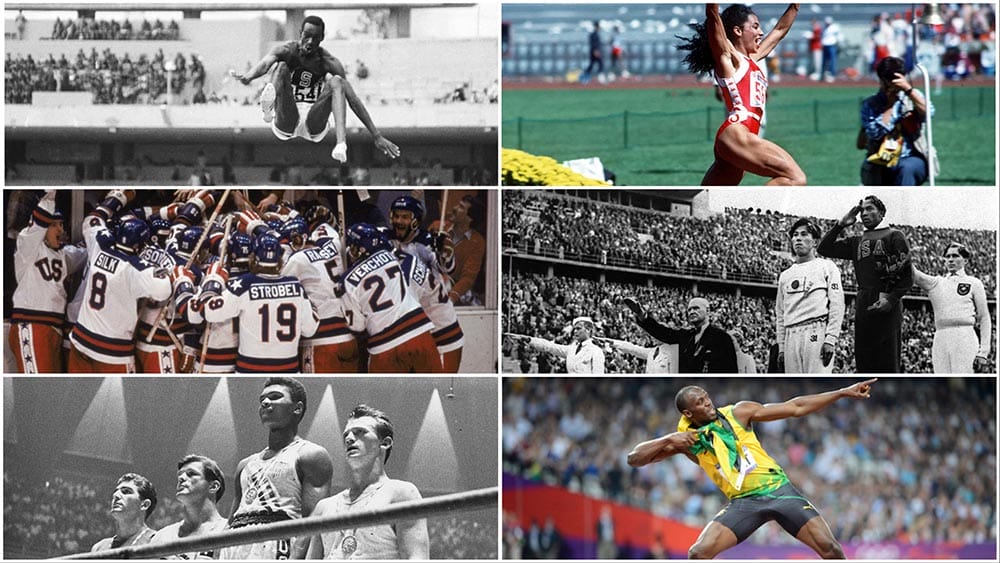
The Olympic Games have always been a celebration of athleticism, unity, and human achievement. Over the years, these monumental events have been captured by skilled photographers who have created iconic images that tell powerful stories.
In this guide, I will take you through amazing photos from Olympic history and explore some of the incredible stories behind the shots that immortalised the spirit of the Games.
Learn about the role of photographers in documenting the Olympic Games and the importance of visual storytelling in capturing the essence of the event.
Explore how Olympic photography has evolved over time, from the early days of film to the digital era, allowing for more dynamic and immediate coverage of the Games. Relive some of the most iconic moments of triumph and victory in Olympic history through the lenses of talented photographers.
The historic photograph of Jesse Owens standing on the podium with four gold medals at the 1936 Berlin Olympics, challenging racism and prejudice on the world stage.
The 1936 Summer Olympics, also known as the “Nazi Olympics,” were held in Berlin, Germany, under the leadership of Adolf Hitler’s Nazi regime. The Nazi government intended to use the Olympics as a propaganda tool to showcase Aryan supremacy.
Despite the racial tensions of the era and the Nazi ideology, Jesse Owens made history during the 1936 Olympics by winning four gold medals in track and field events. He won gold in the 100 meters, 200 meters, long jump, and 4×100 meters relay. Owens’ victories were significant not only for his remarkable athletic ability but also as a powerful refutation of Nazi claims of Aryan racial superiority.
The famous photo in question shows Jesse Owens on the podium, wearing his four gold medals around his neck. This photo became an enduring symbol of triumph over racism and discrimination. It represents a pivotal moment in the history of sports and the struggle for civil rights.
Jesse Owens’ success at the 1936 Olympics was a powerful statement against racism and discrimination. He returned to the United States as a hero but still faced segregation and inequality in his own country. Nevertheless, his achievements helped pave the way for greater opportunities and recognition for African American athletes in the years to come.

The image of a young Cassius Clay, later known as Muhammad Ali, celebrating his boxing gold medal at the 1960 Rome Olympics, foreshadowing his legendary career.
Cassius Clay qualified for the 1960 Summer Olympics in Rome as a light heavyweight boxer. At just 18 years old, he was one of the rising stars of the U.S. boxing team.
Clay’s journey through the Olympic boxing tournament was impressive. He defeated boxers from several countries on his way to the finals, including a victory over Zbigniew Pietrzykowski of Poland in the gold medal match.
After defeating Pietrzykowski, Clay climbed to the top of the podium to receive his gold medal. It was at this moment that the iconic photo was taken. Clay stood proudly, holding the gold medal high above his head with a triumphant and determined expression on his face.
The victory pose photo captures not only Clay’s athletic achievement but also his charisma and self-confidence. It foreshadowed the brash and confident persona he would adopt later in his professional career as Muhammad Ali. At the time, he was still relatively unknown to the world, but his confidence and self-assuredness were already evident.

The powerful image of Tommie Smith and John Carlos raising their fists in a Black Power salute during the 1968 Mexico City Olympics, symbolising the fight for civil rights.
During the medal ceremony, as the national anthem played and the American flag was raised, Smith and Carlos made a powerful statement of protest. They both raised a black-gloved fist in the air, a symbol of black power and solidarity with the civil rights movement. Additionally, they both wore black socks and no shoes to symbolize African American poverty.
Smith and Carlos’ protest was met with a mix of reactions. Some spectators in the stadium booed and jeered, while others supported their message. The International Olympic Committee (IOC) and the United States Olympic Committee (USOC) were critical of the gesture, and both athletes were expelled from the Olympic Village.
The “Black Power Salute” was a symbolic gesture of protest against racial injustice, inequality, and discrimination, both in the United States and globally. It also highlighted the systemic racism and oppression that African Americans faced in their own country.
Smith and Carlos faced backlash and criticism upon their return to the United States. They received death threats and encountered difficulties in their careers. However, their protest had a lasting impact and contributed to the ongoing conversation about racial justice and the civil rights movement.
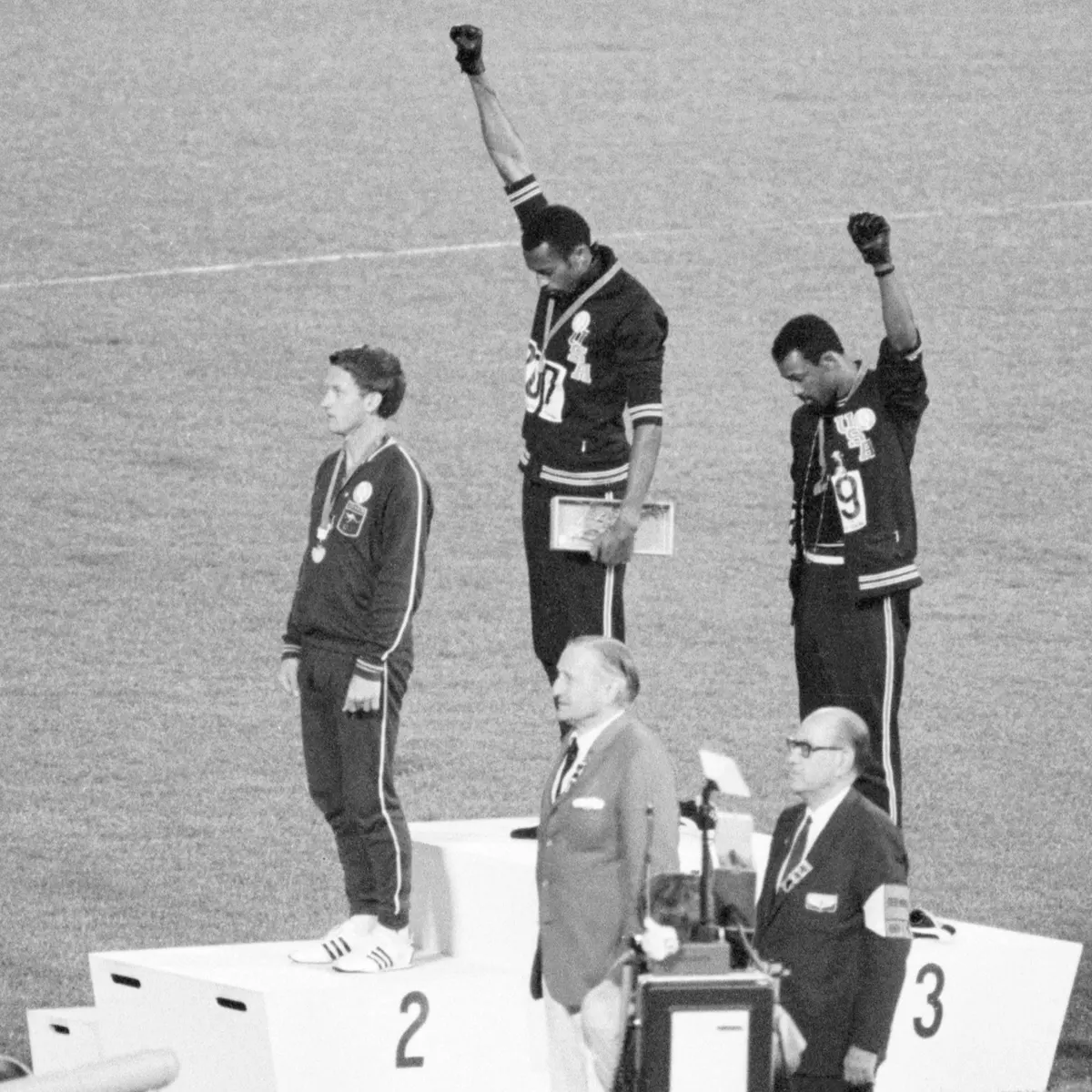
The euphoric moment when the U.S. ice hockey team defeated the Soviet Union during the 1980 Lake Placid Olympics, a victory that united a nation.
The Soviet Union was known for its dominant ice hockey team, which had won the gold medal in six of the previous seven Winter Olympics. The team was composed of professional players who were highly skilled and experienced.
In contrast to the Soviet team, the U.S. team was made up of amateur and college players. Their chances of defeating the Soviet team, who were considered one of the greatest hockey teams ever assembled, were seen as slim to none.
On February 22, 1980, the U.S. hockey team faced the Soviet Union in a semi-final match. To the surprise of many, the American team played exceptionally well and won the game 4-3. The victory was unexpected and considered a major upset.
The famous photograph captures the joy and jubilation of the U.S. hockey team immediately after their victory. The players can be seen celebrating on the ice, with American flags waving, as they realize the significance of their achievement.
Al Michaels, the play-by-play announcer for the game, famously exclaimed, “Do you believe in miracles? Yes!” as the final seconds of the game ticked away. This phrase has become synonymous with the “Miracle on Ice.”
The U.S. team went on to win the gold medal by defeating Finland in the final game. Their victory over the Soviet Union remains one of the most memorable moments in Olympic and sports history.

The iconic image of Florence Griffith-Joyner, known as Flo-Jo, at the 1988 Seoul Olympics. Her dazzling smile and vibrant style, captured by photographers, epitomised the spirit of Olympic excellence.
The 1988 Summer Olympics in Seoul were a significant event in Flo-Jo’s career. She was already a well-established sprinter, but these Olympics would prove to be her greatest triumph.
One of the most iconic moments during the 1988 Olympics came in the women’s 100-meter final. Flo-Jo set a world record by completing the race in just 10.49 seconds, a record that still stands today. Her performance was not only remarkable for its speed but also for her striking appearance, featuring her trademark one-legged, asymmetrical tracksuit.
The famous photograph shows Flo-Jo after her record-breaking run, looking triumphant and exuberant. She’s holding her right hand up to her face, displaying her elaborately designed fingernails, which became one of her distinctive trademarks.
Flo-Jo’s incredible success at the 1988 Olympics made her a beloved figure in the world of sports. However, her rapid improvements in performance, her unique style, and her untimely death in 1998 at the age of 38 have led to questions and occasional controversy surrounding her accomplishments.
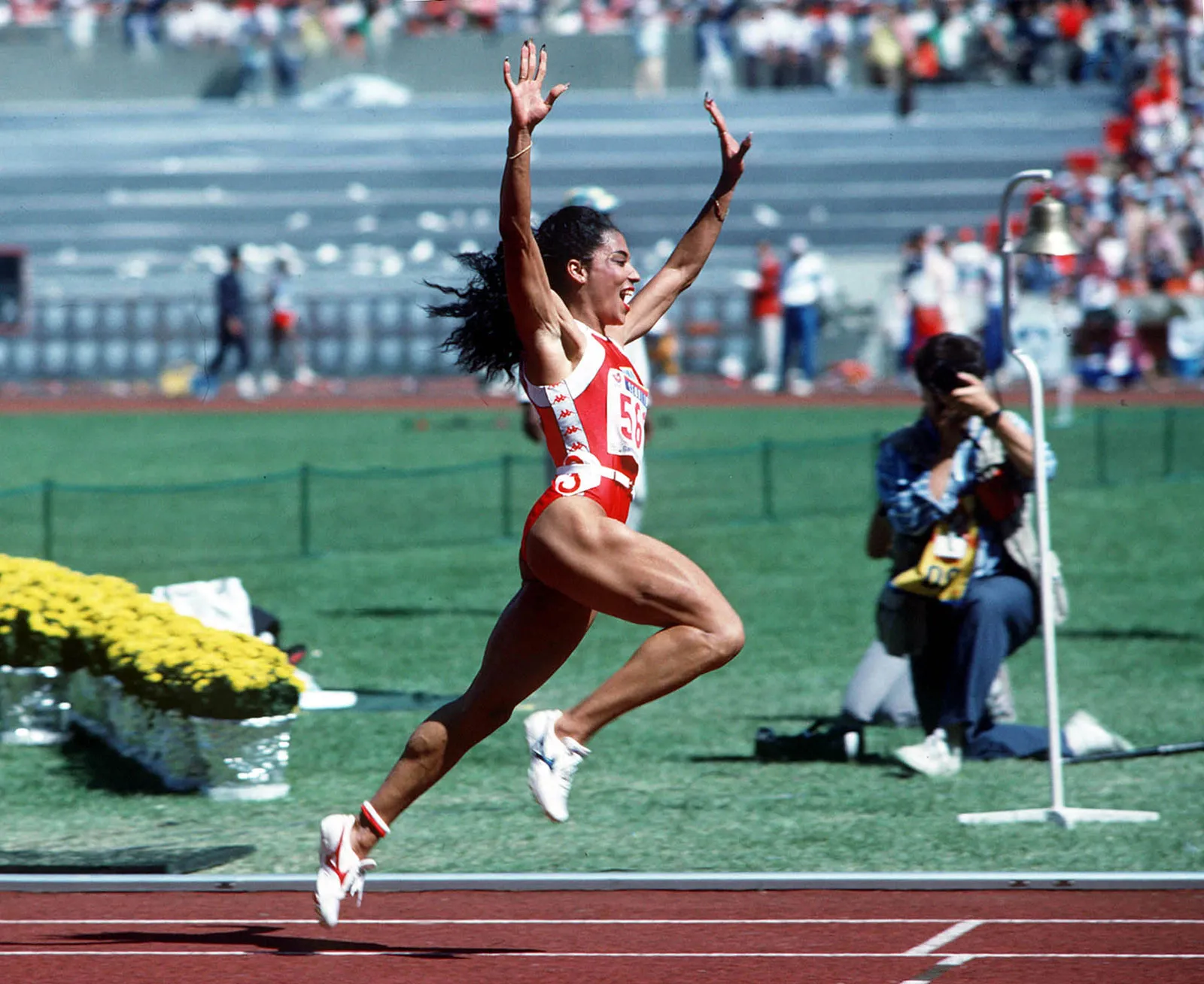
The 1968 Summer Olympics in Mexico City were notable for several reasons, including the high altitude of the host city, which could have a significant impact on athletic performances due to the reduced air density.
On October 18, 1968, during the long jump competition, Beamon took his first jump. What followed was an extraordinary and almost unbelievable performance. Beamon soared through the thin Mexican air, covering a distance that was previously thought to be unattainable.
Bob Beamon’s jump measured an astonishing 8.90 meters (29 feet, 2½ inches), shattering the existing world record by nearly two feet. This jump remains one of the most significant and astonishing moments in the history of track and field. Beamon’s reaction upon landing was a combination of disbelief and jubilation.
The famous photograph captures Beamon in mid-air during his world-record-breaking jump. The image is a powerful representation of human achievement and the triumph of the human spirit.
Beamon’s incredible performance stunned the sports world. His record-breaking jump was so far beyond what anyone had previously accomplished that it seemed almost superhuman. It stood as the world record for an astonishing 23 years before it was broken in 1991.
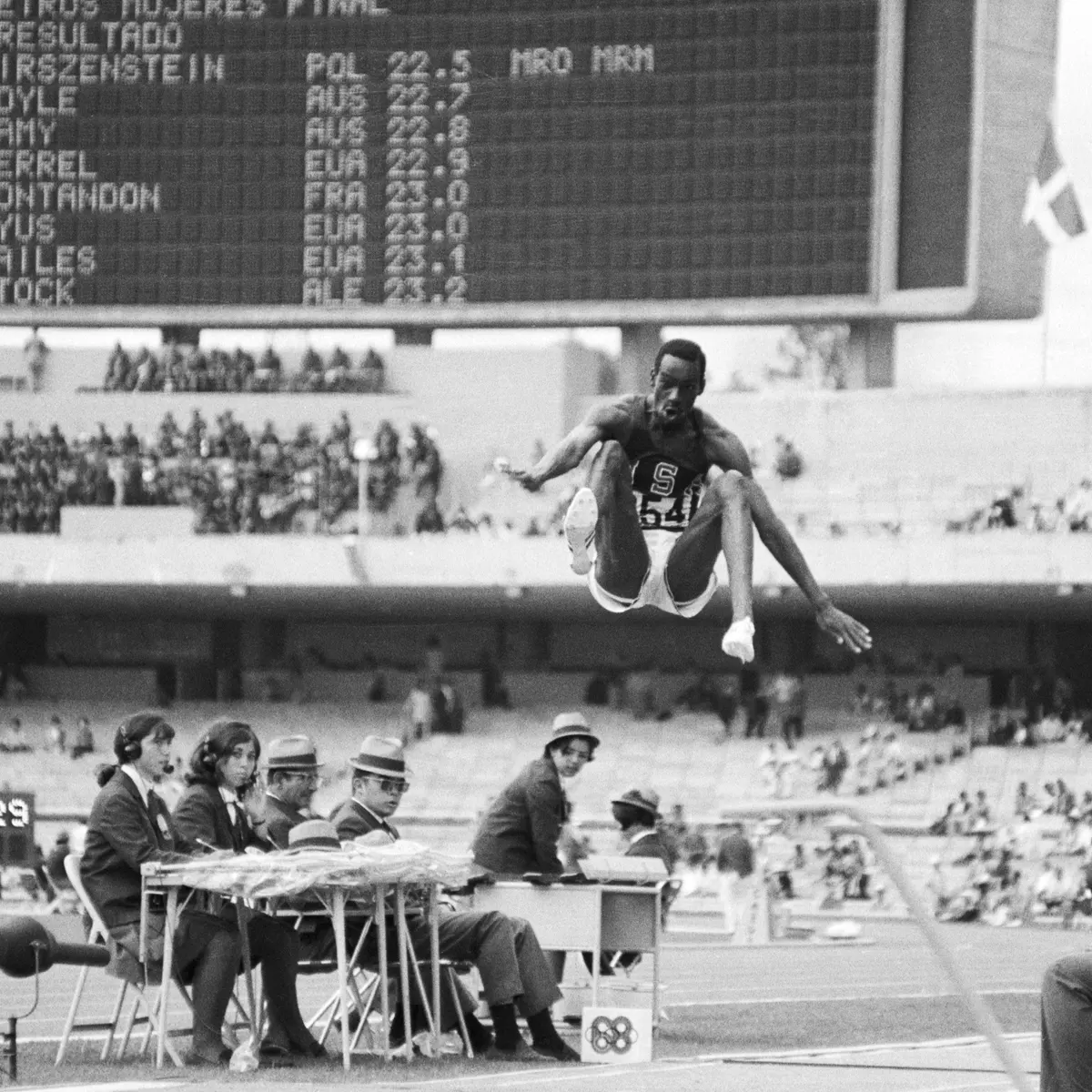
Kerri Strug was a talented American gymnast and a member of the U.S. women’s gymnastics team, known as the “Magnificent Seven.” The team was competing on home soil at the 1996 Olympics, and Strug was one of the key members.
The gymnastics team competition is divided into multiple events, and it consists of both compulsory and optional routines. The U.S. team was in a fierce competition with the Russian team (formerly part of the Soviet Union) for the gold medal.
During the team competition, Strug injured her ankle while landing her first vault. Despite the injury, she completed her second vault, but it was clear that she was in pain. Her second vault was not her best, and she landed with a limp.
With the gold medal on the line and the Russian team closely behind, Kerri Strug faced a critical decision. She needed to perform one more vault to secure the team’s victory. Her coach, Bela Karolyi, and her teammates encouraged her to go for it, despite her injury.
In a display of immense determination and courage, Strug decided to make the final vault. Despite her injury, she executed a nearly flawless vault and landed on one foot, immediately collapsing in pain. Her score was enough to secure the gold medal for the U.S. team.
The iconic photograph captures Kerri Strug landing on one foot after her final vault, grimacing in pain. Her coach, Bela Karolyi, and her teammates rush to her side to offer support. The image perfectly encapsulates the sacrifice and determination of an athlete who gave her all for her team and country.
Kerri Strug’s courageous performance became an enduring symbol of Olympic spirit and determination. She became a national hero and a source of inspiration for many. Her injury and subsequent triumph showcased the resilience and sacrifice often required in elite athletics.
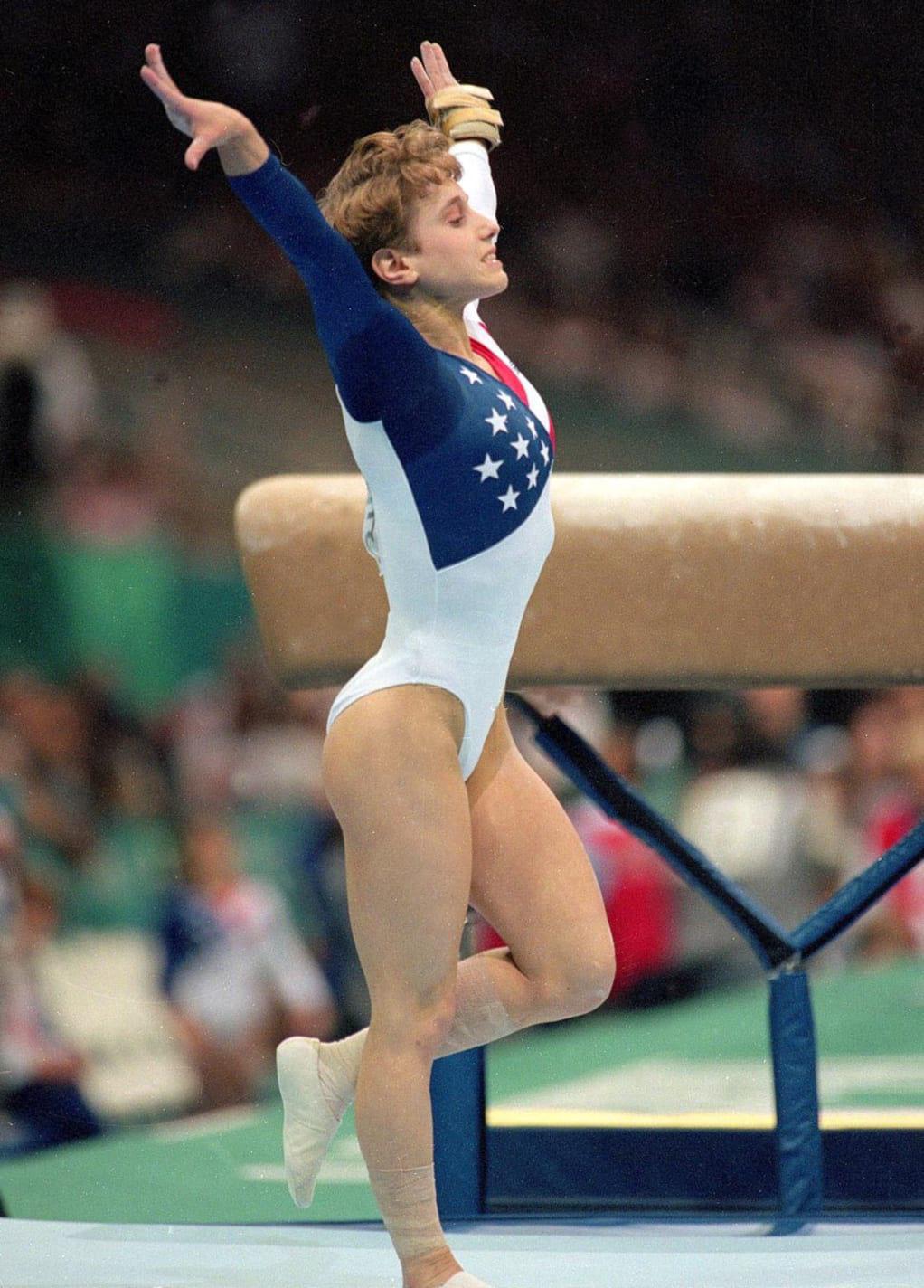
Usain Bolt, a Jamaican sprinter, is widely regarded as one of the greatest track and field athletes of all time. Known for his incredible speed and charisma, Bolt has set numerous world records and won multiple Olympic gold medals.
The 2008 Summer Olympics were held in Beijing, China. Bolt was already a rising star in the sprinting world and had the opportunity to showcase his talent on the international stage.
One of the most anticipated events at the 2008 Olympics was the men’s 100-meter sprint, often considered the marquee event of track and field. Bolt was a favorite to win the gold medal.
In the 100-meter final, Bolt didn’t just win the gold medal; he did so in record-breaking fashion. He set a new world record with a time of 9.69 seconds, breaking the previous record he had set earlier in the year.
After crossing the finish line and realizing he had secured the gold medal and set a new world record, Usain Bolt celebrated in a unique and charismatic manner. He extended his arms to the sides, forming the shape of a lightning bolt, and flashed a bright smile as he looked to his left and right.
The photograph capturing Bolt’s “Lightning Bolt” pose became an instant sensation. It perfectly encapsulated his incredible speed and his charismatic personality. The pose and the photograph came to symbolize his dominance in sprinting and his larger-than-life presence in the sport.
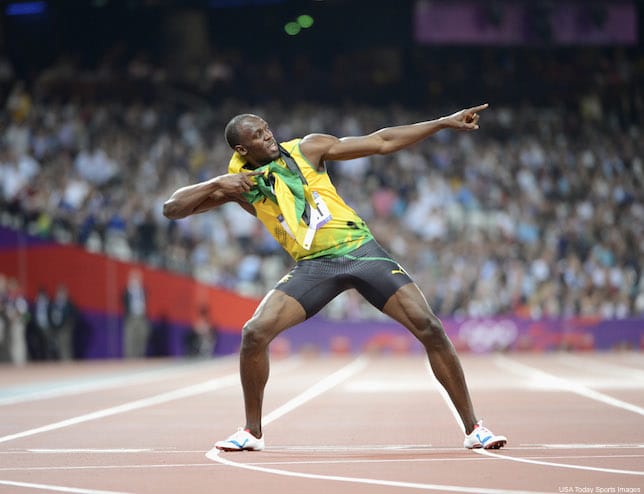
The most famous Olympic photographs transcend the realm of sports photography, becoming cultural touchstones that capture the essence of the Olympic Games—moments of triumph, unity, and humanity.
These images remind us of the extraordinary feats achieved by athletes and the enduring spirit that unites people from around the world every four years. They serve as a testament to the power of photography to freeze time and preserve moments that continue to resonate with us all.
Discover TOP features in the Lightroom CC mobile app with this guide for enhancing your photo editing skills. For desktop and tablet too.
Shooting sunsets using amazing 5-in-1 magnetic lens filters from Kentfaith, the 1st choice for photo & video products.
Popular memory cards for photography – what’s the best SD card for your digital camera? Choose the right capacity and class speed in our guide
Learn the basics of photography – fast – with our FREE 60-Second Photographer online course. Each class is short and sharp with simple, actionable steps that give you immediate results.
x 30 lessons

© iPhotography™
Become a confident and competent photographer in less than 30 minutes!
Before you leave, make sure you’ve secured your FREE online photography course (worth £29.99)
Each class is just 60-seconds or less making it the fastest and easiest way to learn photography!